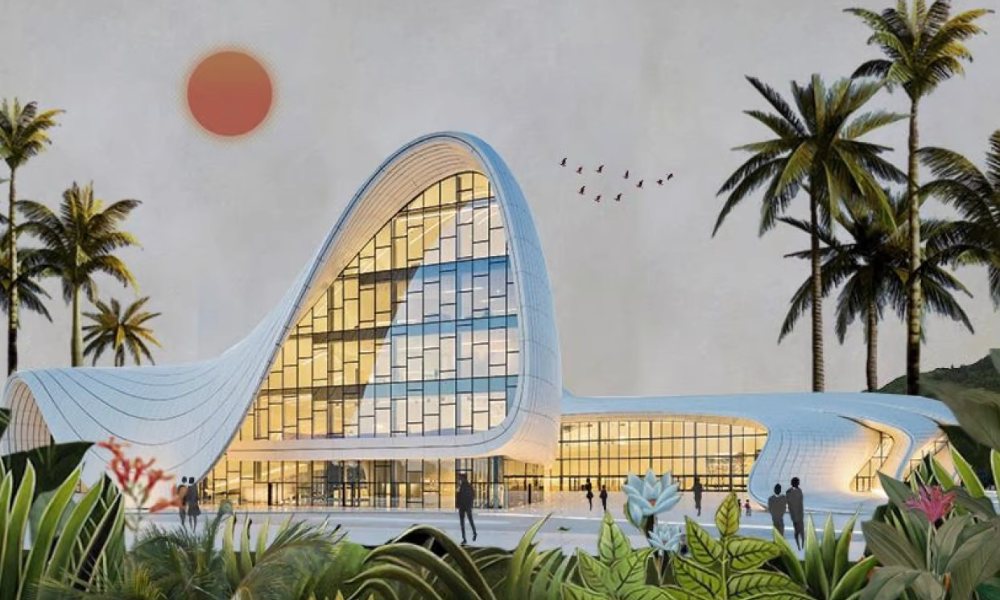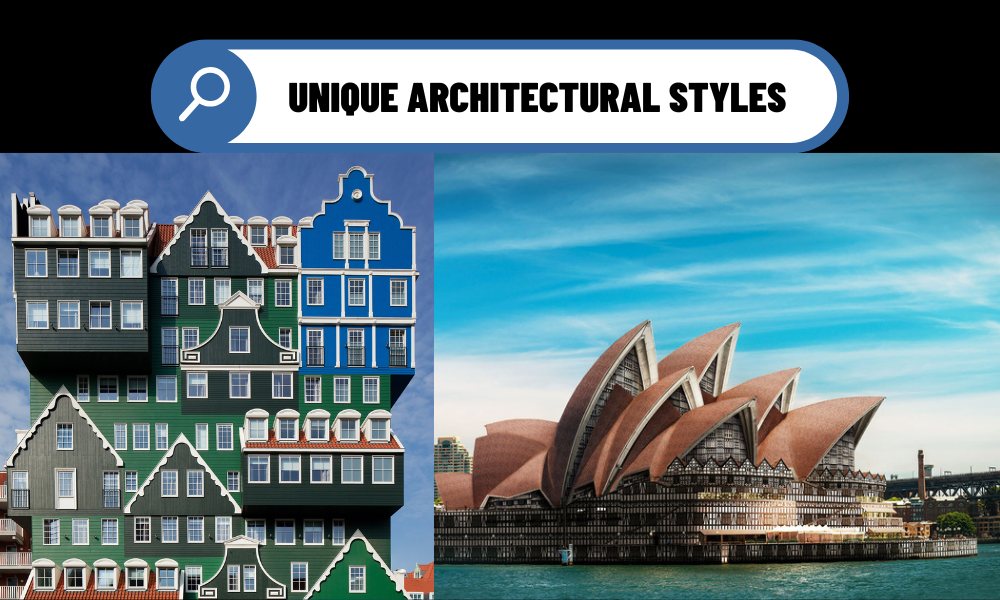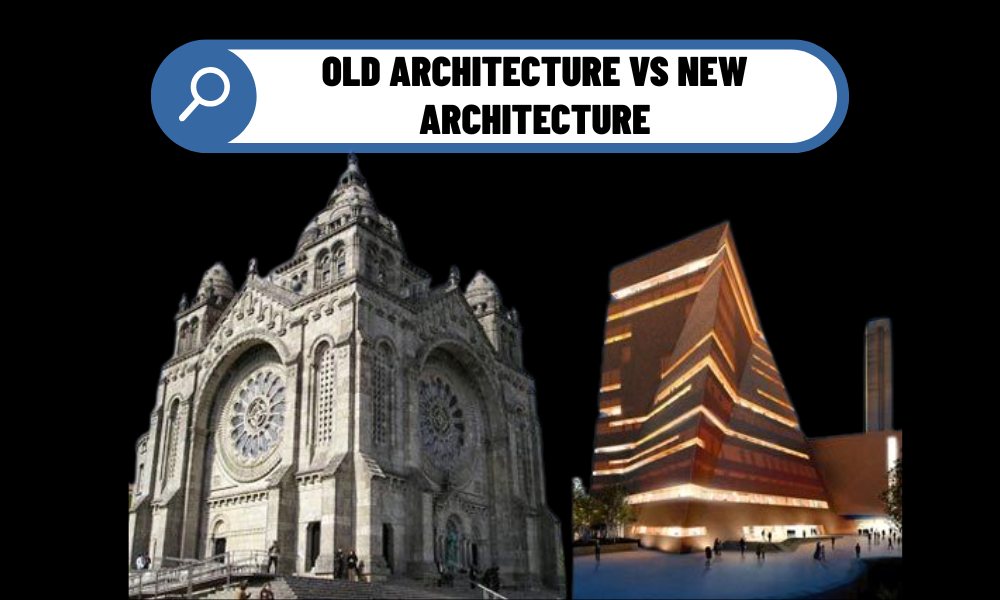As architecture evolves, it does more than respond to necessity—it reflects identity, innovation, and the spirit of its time. Across the world, we are witnessing a remarkable design movement: a seamless blending of traditional architectural styles with contemporary techniques, materials, and philosophies.
These unique architectural styles are redefining how we build and live, offering a hybrid language that respects cultural roots while embracing future-forward thinking. In this article, we’ll explore global examples where old meets new in powerful, poetic ways.
Contents
Unique Architectural Styles
Neo-Vernacular Architecture
Where heritage becomes sustainability
Neo-vernacular architecture revisits local building traditions—like stilt houses, adobe walls, or thatched roofs—and reinterprets them using modern tools, sustainable materials, and clean design language.
This style doesn’t just copy the past; it evolves it. In places like Southeast Asia, architects are using bamboo and rammed earth in climate-responsive designs that echo ancestral forms while incorporating solar panels and modern plumbing.
🔍 Example: The “House for All Seasons” in China by Rural Urban Framework mimics the courtyard typology of rural homes while using recycled brick and passive cooling.
Contemporary Islamic Architecture
Balancing innovation with sacred geometry
A modern take on Islamic architectural heritage—featuring geometric patterns, calligraphy, domes, and courtyards—combined with minimalist forms, smart technology, and experimental spatial design.
This style bridges centuries of cultural identity with today’s needs for sustainability and urban density. Think of mosques or civic buildings that use traditional motifs but in laser-cut steel, sustainable concrete, and parametric design tools.
🔍 Example: The King Abdullah Petroleum Studies and Research Center in Riyadh blends Islamic geometry with high-tech shading and sustainable energy systems.
Modern South Asian Temple Design
Reimagining sacred space in a globalized world
Across India, Nepal, and Sri Lanka, temples and spiritual centers are being designed with contemporary forms that reinterpret ancient Hindu and Buddhist principles.
These buildings use spatial symbolism, sacred geometry, and natural light in avant-garde compositions—proving that spirituality and innovation are not mutually exclusive.
🔍 Example: The BAPS Shri Swaminarayan Mandir in Abu Dhabi will be a traditional stone temple built without steel—but with modern seismic engineering and global design collaboration.
Nordic Modernism with Folk Influence
Where minimalism meets mythology
Scandinavian architecture is known for clean lines, wood, light, and simplicity. But a new generation of designers is blending that minimalist tradition with folklore, organic shapes, and tactile materials.
It honors the essence of traditional Nordic homes—warmth, connection to nature—while applying it in public buildings, museums, and even digital architecture.
🔍 Example: The Fogo Island Inn in Newfoundland blends modern modular design with vernacular fishing hut architecture, preserving cultural memory.
Japanese Metabolist Revival
Old philosophies, futuristic forms
Inspired by the post-WWII Metabolism movement in Japan, some architects are reviving the modular, expandable, organic architecture envisioned by pioneers like Kisho Kurokawa—this time, with better tech and more sustainability.
It’s both nostalgic and visionary. While rooted in the Buddhist philosophy of impermanence, it also anticipates modular cities, floating buildings, and cybernetic design.
🔍 Example: Kengo Kuma’s work blends Japanese traditional timber joints with digital fabrication and parametric geometry.
African Futurism in Architecture
Merging indigenous wisdom with futuristic design
A rising movement across Africa celebrates local building practices (like earth building, thatch, shaded courtyards) and merges them with bold geometry, green materials, and digital planning.
African Futurist architecture isn’t just a trend—it’s a decolonial, climate-conscious movement. It questions Western building norms and offers radical, relevant alternatives.
🔍 Example: The Makoko Floating School in Lagos was an icon of community-focused design responding to climate and context.

Why These Unique Architectural Styles Matter Today
In an era of globalization, uniform skyscrapers and glass boxes often dominate urban skylines. But in the face of this sameness, unique architectural styles that blend old and new provide:
- Cultural continuity in a rapidly changing world
- Environmental resilience through time-tested materials and techniques
- Design intelligence grounded in centuries of lived experience
- Aesthetic diversity, making cities more meaningful and personal
Tech-Enhanced Tradition
Architects are increasingly using digital tools, AI, and parametric design software to reinterpret traditional building systems with precision and creativity. We’re moving into an age where the future of architecture will not reject the past—but evolve from it.
Whether it’s a mud-brick mosque enhanced with cooling simulations or a temple designed using 3D scans of ancient scripts, the convergence of history, culture, and innovation is shaping the next frontier of architecture.
Architecture is the physical language of identity. As we build the future, we must remember that uniqueness doesn’t always mean complexity—it can mean authenticity, relevance, and a deep connection to place.
By exploring and supporting unique architectural styles, we don’t just preserve history—we create future legacies that are culturally rooted, environmentally sound, and globally inspiring.



